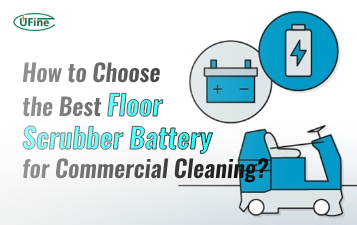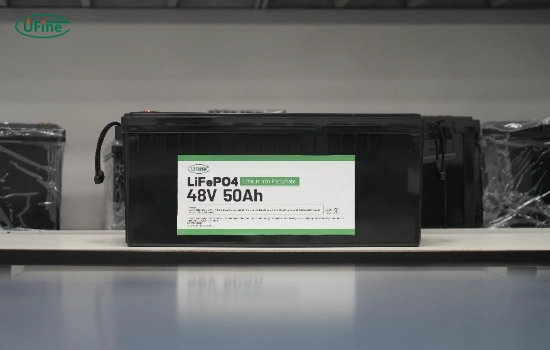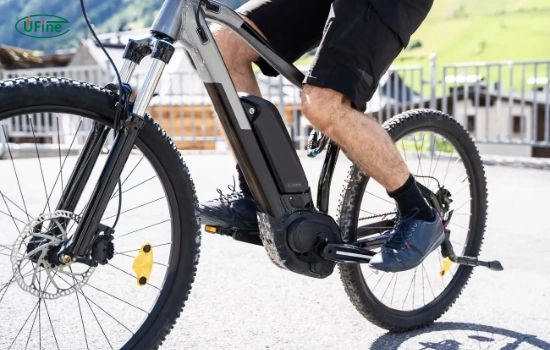Electric bicycles, commonly known as e-bikes, have surged due to their eco-friendliness and convenience. However, a crucial aspect of owning an e-bike is understanding its battery’s lifespan. This article will explore various facets of e-bike batteries, including their types, lifespan, factors affecting their longevity, and maintenance tips.
Part 1. What is an ebike battery?
An ebike battery is a rechargeable power source that provides energy to the bicycle’s electric motor. Most modern ebikes use lithium-ion batteries, which are favored for their high energy density, lightweight design, and long lifespan. Other types of batteries, such as lead-acid and nickel-metal hydride (NiMH), are also used. Still, they are less common due to their weight and shorter lifespan.
Key components of an ebike battery include:
- Cell Configuration: The individual cell arrangement determines the overall voltage and capacity.
- Battery Management System (BMS): A critical component that monitors the battery’s health, ensuring safe charging and discharging.
- Charger: A device that replenishes the battery’s energy, typically designed to work specifically with the battery type.
Understanding these components is essential for maximizing the battery’s performance and lifespan.
Part 2. How long do ebike batteries last?
The lifespan of an e-bike battery can vary significantly based on several factors, including usage patterns, maintenance, and environmental conditions. On average, most lithium-ion e-bike batteries last between 2 and 5 years.
Factors that influence battery life include:
- Charge Cycles: A charge cycle is defined as a full discharge followed by a full recharge. Most lithium-ion batteries can handle 500 to 1,000 charge cycles before their capacity significantly diminishes.
- Usage Frequency: Regular use can help maintain the battery’s health, as batteries that sit unused for extended periods may degrade faster.
- Environmental Conditions: Extreme temperatures can adversely affect battery performance. Ideally, batteries should be stored and used in temperatures between 20°C to 25°C (68°F to 77°F).
Understanding these factors can help you gauge how long your ebike battery might last.
Part 3. What factors affect ebike battery life?
Several key factors can impact the longevity of an ebike battery:
- Charging Habits: Frequent partial charges can be beneficial, but consistently allowing the battery to drop to deficient levels before recharging can shorten its lifespan. Keeping the battery between 20% and 80% charged is best.
- Temperature: High temperatures can cause batteries to overheat, while extremely low temperatures can reduce efficiency. Always store your battery in a cool, dry place.
- Storage Conditions: If you plan to store your e-bike for an extended period, it’s advisable to charge the battery by about 50% before storing it. This helps prevent deep discharge, which can damage the battery.
- Maintenance: Regularly checking the battery’s health and ensuring the connections are clean can prolong its life.
By being mindful of these factors, you can significantly enhance the lifespan of your ebike battery.
Part 4. How to prolong your ebike battery life?
To maximize the lifespan of your ebike battery, consider the following tips:
- Avoid Overcharging: Use an intelligent charger that automatically stops charging when the battery is full.
- Regular Use: Try to ride your ebike regularly to keep the battery active.
- Proper Storage: Store the battery in a cool, dry place if not used. Avoid leaving it in hot cars or direct sunlight.
- Clean Connections: Ensure the battery terminals are clean and corrosion-free.
- Temperature Management: Avoid exposing the battery to extreme temperatures, both hot and cold.
Implementing these practices can help you get the most out of your ebike battery.
Part 5. What are the different types of ebike batteries?
Ebikes primarily use three types of batteries:
- Lithium-ion Batteries: The most common type, known for their efficiency, lightweight, and long lifespan. They are available in various configurations, such as 18650 cells.
- Lead-acid batteries: Heavier and bulkier, these batteries are less efficient and have a shorter lifespan. They are often used in lower-end bikes.
- Nickel-metal hydride (NiMH) Batteries are less common but offer a compromise between lead-acid and lithium-ion batteries in terms of weight and efficiency.
Common Battery Configurations for Ebikes:
- 18650 Cells: A popular lithium-ion battery configuration known for compact size and high energy density. They are often used in e-bikes for their reliability and performance.
- 21700 Cells: This is a larger lithium-ion cell than the 18650, offering even higher energy density, making it ideal for high-performance bikes.
- 26650 Cells: These lithium-ion cells are more extensive and provide more capacity, but at the cost of added weight, making them suitable for ebikes that require longer ranges.
Part 6. Signs your ebike battery needs replacement?
Recognizing when your ebike battery is nearing the end of its life is essential for maintaining performance. Here are some signs to watch for:
- Decreased Range: If your e-bike does not travel as far at full charge as it used to, it may be time for a replacement.
- Longer Charging Times: If it takes significantly longer to charge your battery, this could indicate that it is losing its capacity.
- Physical Damage: Any signs of swelling, leaks, or corrosion around the battery terminals are severe indicators that the battery needs to be replaced.
- Warning Lights: Many ebikes have built-in diagnostics that alert you if the battery malfunctions.
If you notice any of these signs, consider consulting a professional for an assessment.
Part 7. FAQs
-
What is the average lifespan of an ebike battery?
Typically, ebike batteries last between 2 to 5 years, depending on charge cycles and usage. -
How can I improve the lifespan of my e-bike battery?
You can extend your battery life by following proper storage, charging, and maintenance techniques. -
Is it safe to leave my ebike battery charging overnight?
It is generally safe but not recommended to avoid overcharging; use smart chargers if possible. -
What should I do if my e-bike battery is not charging?
You may need to check the battery’s health; sometimes, it may require replacement. -
Can I replace my ebike battery with a different brand?
Yes, but ensure compatibility in terms of voltage and capacity.
Related Tags:
More Articles

How to Choose the Best Floor Scrubber Battery for Commercial Cleaning?
Selecting the ideal floor scrubber battery ensures a long runtime, rapid charging, and minimal maintenance for efficient commercial cleaning operations.
Battery for Blower vs Battery for Leaf Vacuum: Which One Should You Choose?
Battery for blower vs leaf vacuum—learn the key differences in power, fit, and runtime to choose the right battery for your outdoor tool needs.
How to Choose the Right Battery for Blower?
Choosing the right blower battery? Consider voltage, capacity, chemistry & usage. This guide helps match the best battery for peak performance.
How to Choose the Best Insulated Battery Box for Lithium Batteries?
Choosing the Best Insulated Battery Box for Lithium Batteries? Discover key factors such as size, material, and safety for optimal protection and performance.
7 Critical Elements on a Lithium Battery Shipping Label
What must be on a lithium battery shipping label? Learn 7 key elements to ensure safety, legal compliance, and correct handling across all transport modes.






